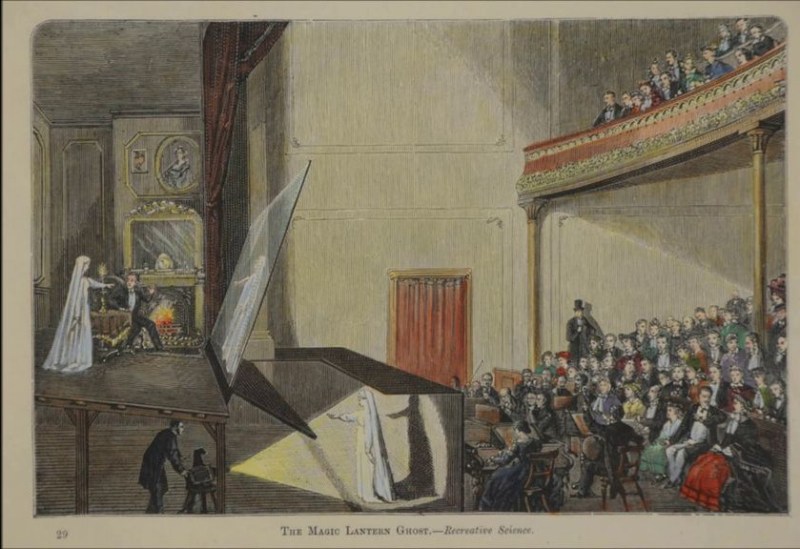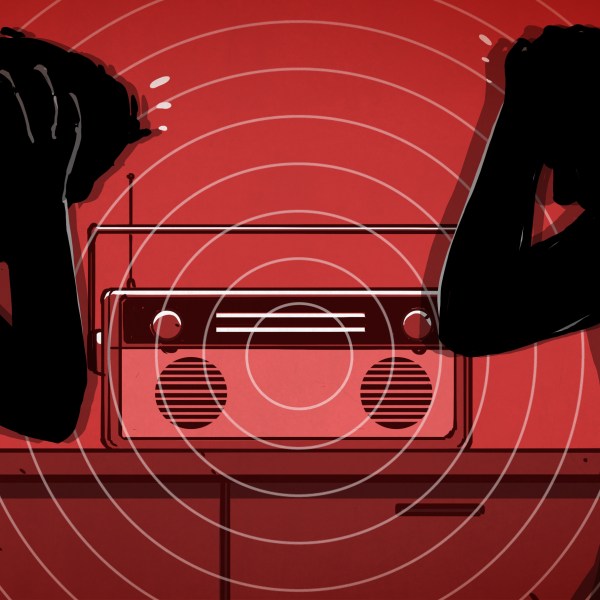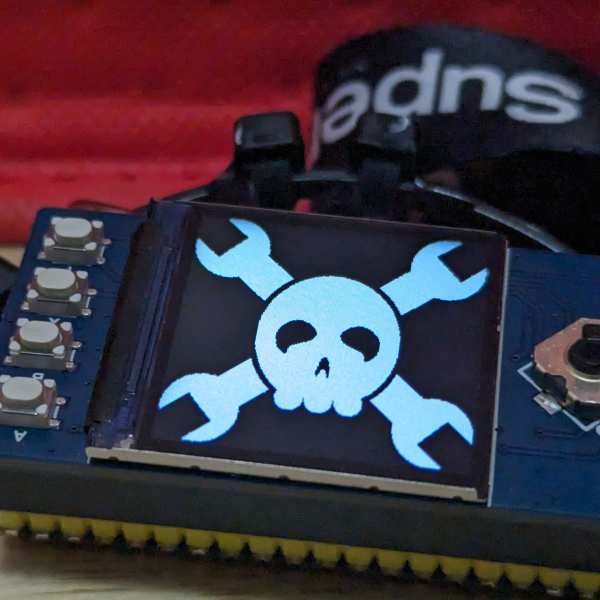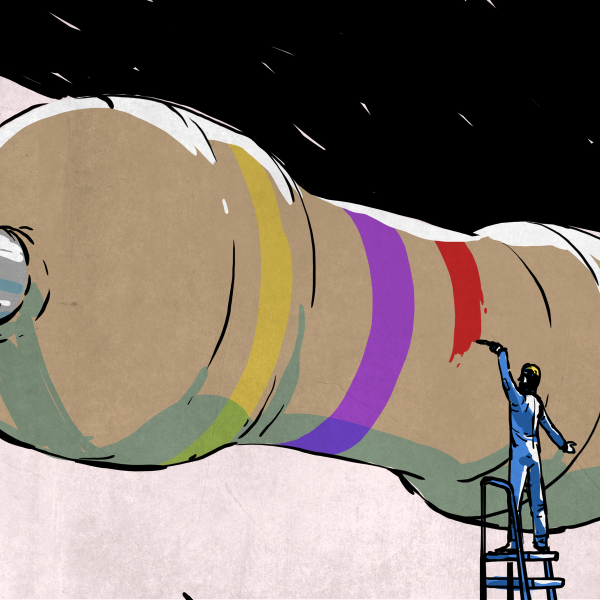Peppers Ghost is a classic technique for making ghosts appear in pictures, video, and even in front of live audiences. In this week’s Halloween themed Instructable, learn how to recreate the effect at home.
It’s really quite simple. By positioning a clear piece of lexan at a 45 degree angle to your “ghost” object, and having the audience (or camera) looking at the lexan at the opposite 45 degree angle, you can produce a very simple ghost effect. This is a great trick for producing some scary ghosts in your haunted house.
But wait. Isn’t this a bit too simple? This is Hack a Day isn’t it? How about making a real moving hologram, isn’t that a bit more of our speed?
Well, this is the exact same technique that is used to make real holograms — just replace that object with a projected image or video! We’ve covered it a couple of times before, explaining the Tupac hologram, and showing off a cool leap motion controlled globe hologram.
Our challenge to you is to make a moving hologram Halloween decoration. After all, you can get pico projectors for less than $100 these days, so why not give it a try? There’s a few more ideas and techniques for positioning the lexan in the video after the break.
















Grumpy cat is not satisfied with his ghost image in the window.
Gh…Gh…Gh…Ghost cat!!!!
You do know what a hologram really is, don’t you?
Yeah, this is irritating in the extreme. These are just reflections, *not* holograms.
We’re all pretty clever here, sure we all knew that. And the linked articles explain that. As does this one. We know, it’s the “Pepper’s Ghost” illusion. It says so in the title.
On behalf of people who don’t know what holograms are, and are stupid enough to assume the adverse of what an explanation tells them, thankyou very much for spelling it out in detail a 6-year-old, who doesn’t know what a hologram is and hasn’t heard of Pepper’s Ghost, could understand. Thanks a lot for those people, of whom many, I know, must read Hackaday.
I’m afraid that with those “100$ pico projectors” you won’t see much of a ghost…
I’ve looked into pico projectors for work. They’re pretty terrible on the brightness. I think something like 200 lumens was the brightest thing we could find at the time.
In a pitch dark room, with a short enough throw distance, it might not look too terrible. However virtually any amount of ambient lighting is likely to totally wash it out.
Sadly you need a TON of space to do peppers ghost right.
That must be a lot of space, What volume does that Ton of space occupy?
Depends on humidity.
http://en.wikipedia.org/wiki/Time_Traveler_%28video_game%29
This is similar but a bit better. I remember playing this, and staring for hours when I wasn’t playing (and it ATE money and SUCKED as a game!), trying to figure it out. A Sega arcade game from 1991. The game was an FMV a lot like Dragon’s Lair only with real actors. A joystick allowed the same type as interaction, only not as much. The game involved not having a clue at which exact second you needed to move the joystick, then dying.
Apparently a large curved mirror projected an image from a CRT fed from a laser-disk. It looked, though, exactly like a bunch of little 6″ high people (and the cabinet was B-I-G!) capering about on the flat top of the machine, just in air. You could put your hand through them.
It was an amazing effect, and of course worked up-close. Either a bloody gigantic one of these, with a mirror the size of the Moon or something, or a more reasonable one, would be an awesome project for any time. I think it’s patented so the details are there. Surprised they didn’t do more with it. Nearly all FMV games are terrible (cept Mad Dog McCree), but it would’ve worked with normal games, it’s just a display technology.
First time I ever saw the Pepper’s Ghost method used was in the Haunted House at Disneyland sometime around 1985.
To reiterate: it is NOT a hologram. ;P
Hologram? Please. A hologram would be visible all the way around it a full 360 degrees. This effect disappears when you move too far to the side of it. Therefore this is NOT a hologram.
Incorrect. (Although this is not a hologram. They mention several times that it is the fake method known as Pepper’s Ghost)
A traditional hologram is not visible from 360 degrees. It is limited by the spread of the light going through the medium that generates it through interference. You could expect maybe 160 degrees, rotated in 3D, so about half of a sphere.
The light that makes the holographic effect doesn’t get bent. The interference generated between multiple photons spreads light between their directions in a fan. Thus, you will see no dot if you are outside of said fan.
The single-mirror technique (shown in the Hackaday post) has the problem that the ghost will be a mirror image. Midway thru the Instructables video is a diagram of the two-mirror system which corects the mirror-image problem.
Hey, this isn’t a hologram! You said the word “hologram” in the description, therefore I require the Hack to be a hologram. I’ve been ripped off!! I demand double my money back!
Just wanted to add something very important – this is not a hologram. Thank you.